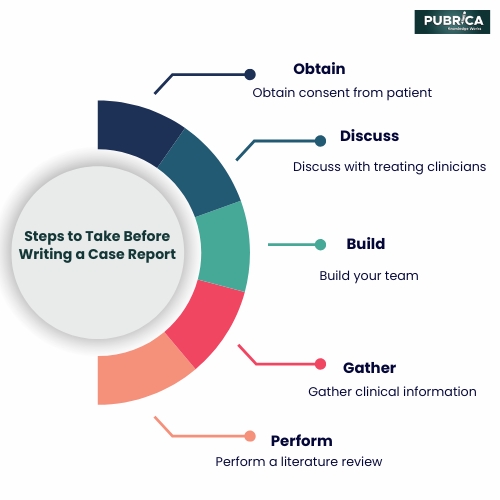
The Leading Journals Shaping Medical Understanding
February 29, 2024Understanding the purpose and structure of clinical case reports
Clinical case report are an essential tool for expanding our knowledge base in the medical field. These reports describe important scientific observations encountered in a clinical setting, providing understandings into the diagnosis, treatment, and management of various medical conditions. Clinical case reports are important in documenting unique or rare cases and providing valuable insights into therapeutic approaches and outcomes.
As outlined in a guide to writing case reports by the Journal of Medical Case Reports and BioMed Central Research Notes, clinical case reports serve several important purposes:
– Documenting rare or unusual cases
– Identifying new or emerging medical conditions
– Highlighting potential adverse effects of treatments
– Providing a basis for further research and investigation
The structure of a clinical case report typically includes an abstract, introduction, case presentation, and discussion.
As described in the same guide to writing case reports, each of these sections serves a specific purpose: –
Abstract: A summary of the case report, including the main findings and conclusions.
Introduction: An overview of the medical condition or issue being discussed, including relevant background information and a brief literature review.
Case Presentation: A detailed description of the patient’s medical history, symptoms, diagnosis, treatment, and outcomes.
Discussion: An analysis and interpretation of the case, including a discussion of the potential implications and recommendations for future research or clinical practice.
To ensure that a clinical case report is well-written and effective, it should include several key elements.
These elements include:
– Clear and concise writing that is easy to understand for a wide range of readers
– Accurate and detailed descriptions of the patient’s medical history, symptoms, and treatment
– A thorough analysis and interpretation of the case, including an exploration of any potential implications and recommendations for future research or clinical practice
– Adherence to ethical guidelines and patient confidentiality requirements
– Compliance with journal-specific guidelines and formatting requirements.
By incorporating these elements into a clinical case report, authors can create a well-written and impactful document that contributes to the advancement of medical knowledge and practice.
Guidelines for writing effective clinical case reports.

The first step in writing an effective clinical case report is selecting an appropriate case. This case should be unique or rare, presenting a clinical condition or intervention that is not commonly encountered.
This will ensure that the case report contributes to expanding the knowledge base in the field. Once an appropriate case has been identified, the next step is to gather and present all relevant information. This includes the patient’s medical history, presenting symptoms, diagnostic tests, treatment, and follow-up care. It is essential to provide a detailed and accurate description of the case, as this will form the basis of the report’s clinical significance and implications.
When presenting the case, it is important to emphasize its clinical significance and implications. This involves providing a clear and concise explanation of how the case contributes to the understanding of the disease or intervention, as well as any potential implications for clinical practice. This can include highlighting new diagnostic or treatment approaches or identifying areas for further research. The CARE guidelines for case reports can be a worthy resource for authors, providing guidance on reducing bias, increasing transparency, and improving the overall quality of the report.[2]
In addition to following the CARE guidelines, authors should also adhere to any specific guidelines provided by the journal they are submitting the report to. These guidelines may include instructions for acceptance criteria, content, and formatting. Ethical considerations should also be considered, ensuring that patient confidentiality and consent are respected.
Best practices for writing and publishing clinical case reports.
When writing and publishing clinical case reports, it is important to follow ethical guidelines and standards. These guidelines help protect patient privacy and ensure that the report is conducted ethically and responsibly. Before writing and publishing a clinical case report, it is necessary to obtain ethical approvals and patient consent. It is also important to comply with ethical standards and patient privacy laws, such as the Health Insurance Portability and Accountability Act (HIPAA) in the United States [1]. Following these guidelines and standards confirms that the report is conducted responsibly and ethically and that the patient’s rights are protected.
Collaborating with co-authors and reviewers is another best practice for writing and publishing clinical case reports. Co-authors can provide feedback and insights, contributing to the overall quality of the report. Reviewers can offer constructive criticism and suggestions for improvement, helping to make certain that the report meets the highest standards of quality and accuracy. Collaboration with co-authors and reviewers can also help to identify potential biases or limitations in the report, leading to a more comprehensive and objective analysis.
Choosing the right journal and submitting your report is a crucial step in writing and publishing clinical case reports. Many biomedical journals publish case reports and provide authors with guidelines for acceptance criteria, content, and formatting. It is essential to carefully review these guidelines and ensure that the report meets the journal’s specific requirements. Authors should also consider the journal’s reputation, impact factor, and target audience when choosing where to submit their report. By selecting the right journal and submitting a high-quality report, authors can increase the likelihood of acceptance and dissemination of their findings.
Tips And Best Practices
Focus on Clinical Relevance and Uniqueness
– Emphasize the clinical relevance and uniqueness of the case being reported. Highlight the novel aspects of the case, such as rare presentations, atypical responses to treatment, or unusual diagnostic challenges. For example, if your report discusses a particularly rare manifestation of a disease, clearly articulate its significance in contributing to medical knowledge and patient care.
Use Clear and Concise Language, Supported by Evidence
– Write in clear and concise language, avoiding jargon that may be unfamiliar to a broader medical audience. Use evidence-based medicine to support your findings, including relevant clinical data, diagnostic tests, imaging studies, and treatment outcomes. Incorporating visuals such as tables, graphs, or images can enhance the clarity and impact of the report.
Engage in Peer Review and Continuous Learning
– Seek feedback from colleagues or mentors through peer review processes to refine and improve your clinical case report. Engaging in peer review facilitates the identification of areas for enhancement, ensuring the accuracy and quality of the report. Also, stay updated with best practices and evolving standards in clinical case reporting by regularly reviewing published case reports and relevant literature.
Finally, writing a clinical case report is a significant aspect of medical research and provides awareness of patient care. It’s important to understand how to write a good clinical case report. You need to pick the right case, gather all the important info, and present it clearly. It’s also important to make sure you’re not breaking any rules or being unethical and to work with other people to make sure your report is the best it can be. If you follow all these tips, you’ll be able to write a great report that can help other people in the medical community.
Pubrica, a global leader in scientific and medical research writing, offers comprehensive physician writing services. Our team of over 500+ academic editors, medical writers, and industry veterans collaborates with clients to create successful scientific and medical documents. Whether you’re a life science company, pharmaceutical firm, medical device manufacturer, or a research scholar, we’ve got you covered. Discover the power of precise, evidence-based writing with Pubrica.
References:
- Act, A. (1996). Health insurance portability and accountability act of 1996. Public law, 104, 191.
- Riley, D. S., Barber, M. S., Kienle, G. S., Aronson, J. K., von Schoen-Angerer, T., Tugwell, P., … & Gagnier, J. J. (2017). CARE guidelines for case reports: explanation and elaboration document. Journal of clinical epidemiology, 89, 218-235.
- Tight, M. (2017). Understanding case study research: Small-scale research with meaning. Sage.
